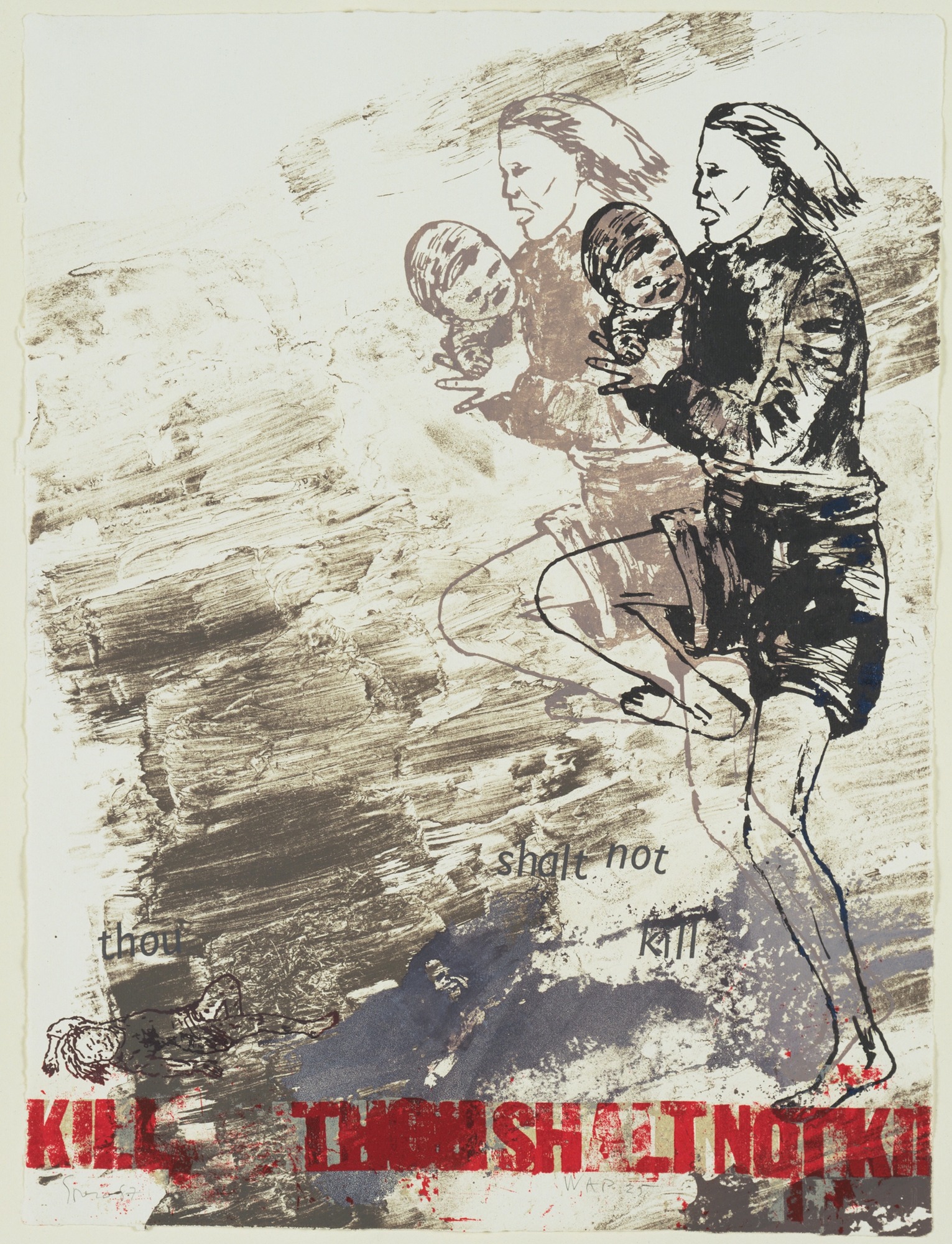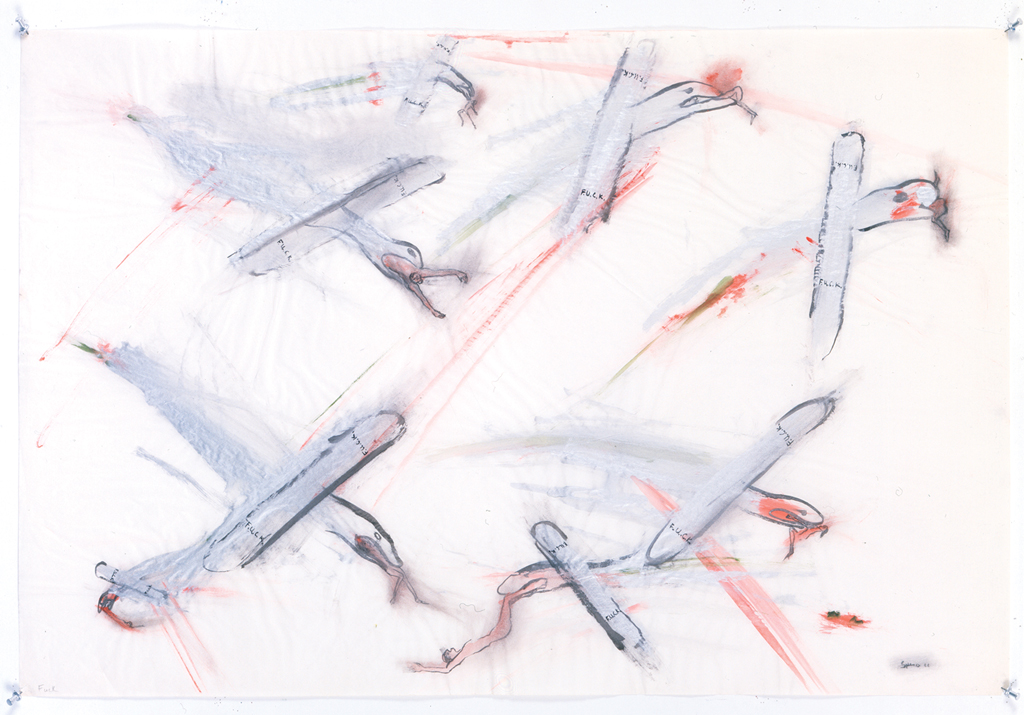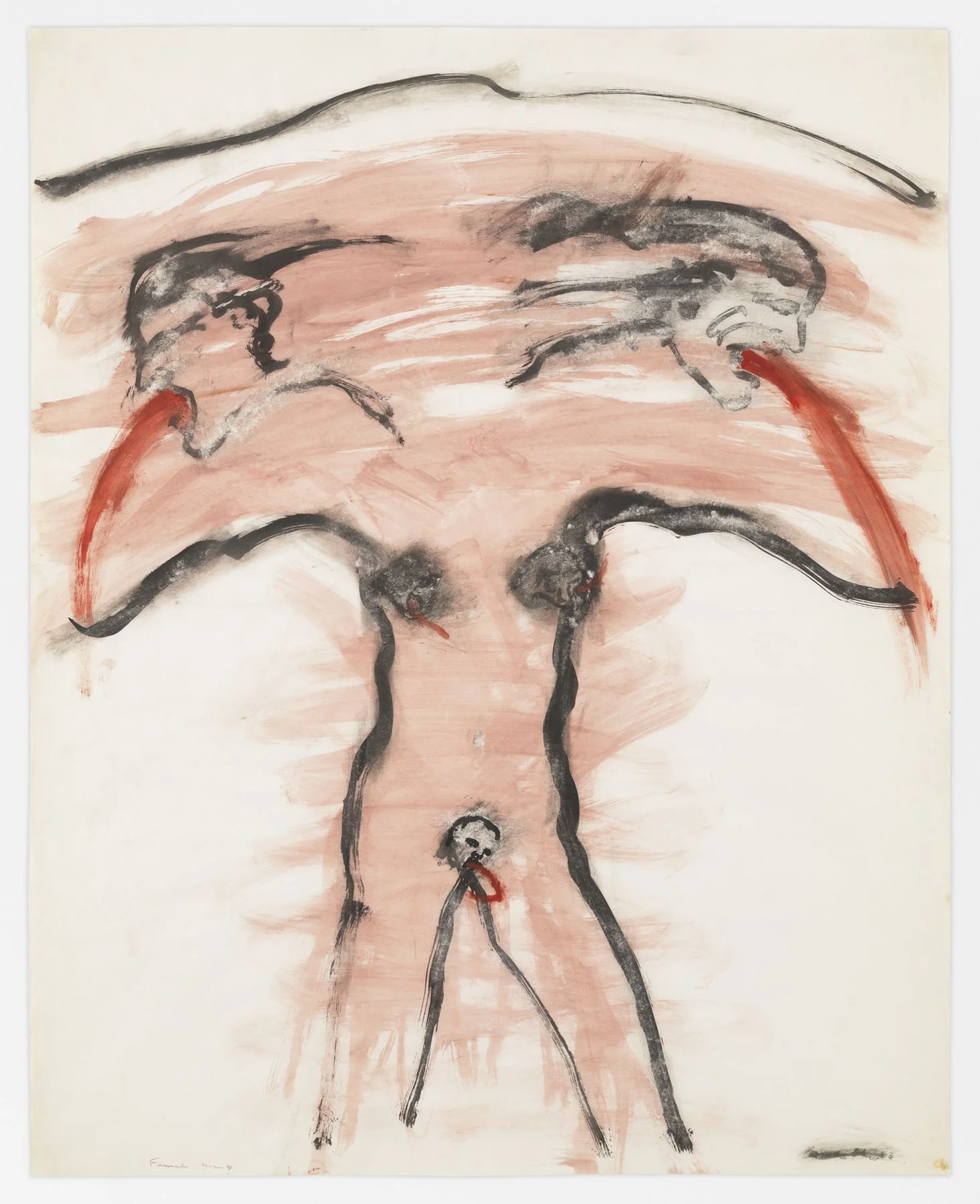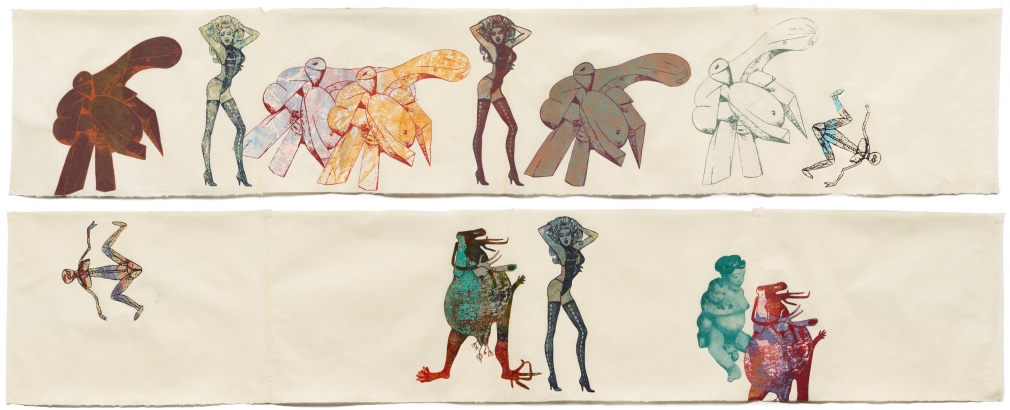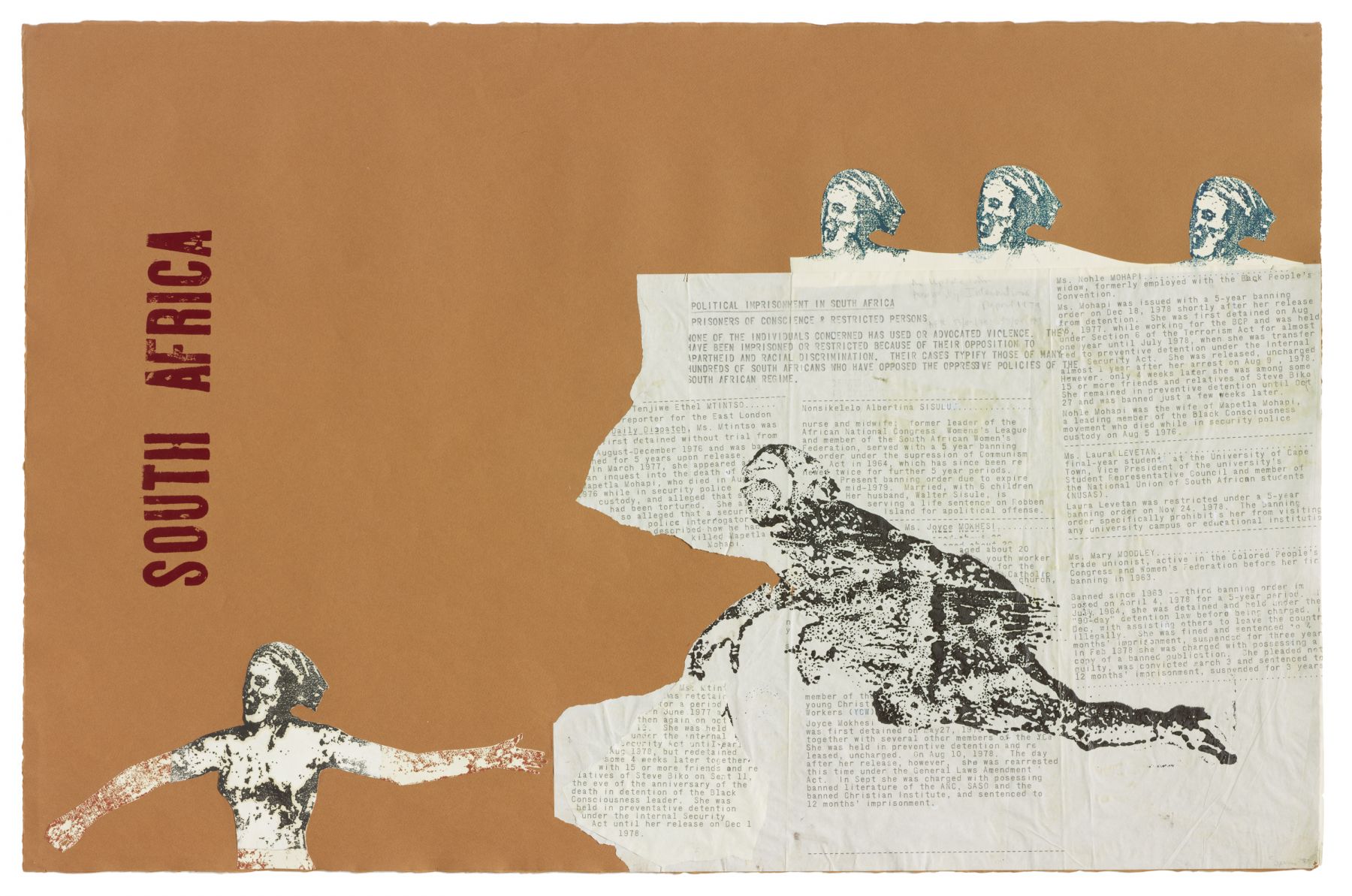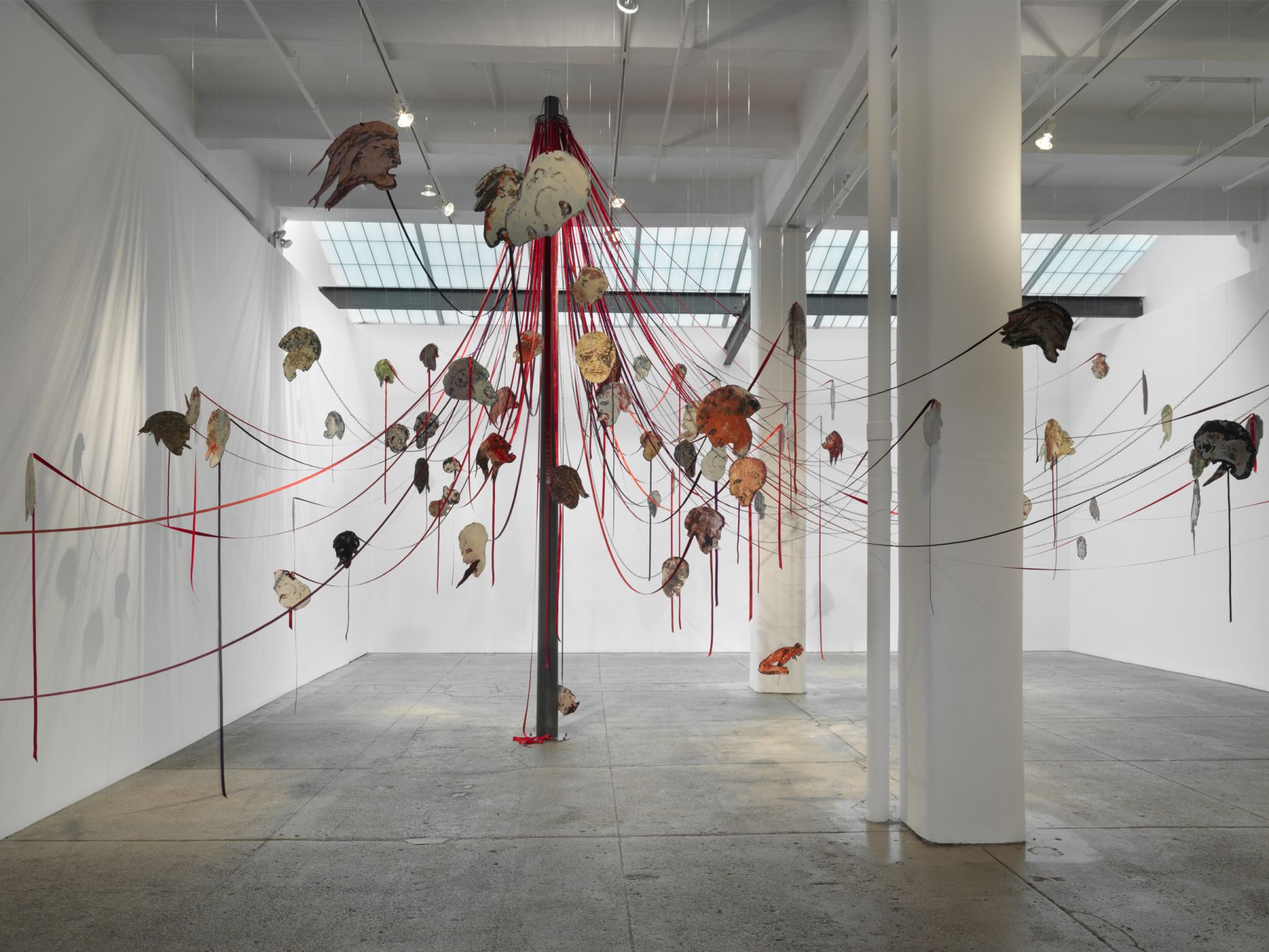“The history of women I envision is neither linear nor sequential. I try, in everything I do—from using the ancient texts, to the mythological goddesses, to H.D.’s poems on Helen of Egypt—to show that it all has reverberations for us today.”
As an artist, activist, and groundbreaking pioneer within the feminist movement, Nancy Spero made an indelible impression on the art world. Spero first began to find her voice in Paris, where she gave shape to internal anxieties about the wars in Vietnam and Algeria, and her feelings of marginalization as a woman artist through her art. The oil paintings made as part of the "Lovers" series from this turbulent period represent well the fundamentally emotive responses that characterize her early work. The paintings depict figures of indeterminate gender intertwined yet in the process of separating; her feelings on the complexity of love and relationships are explicit, yet subtextually, Spero has stated that the sentiment speaks more broadly to the tensions surrounding external crises in global politics. In subsequent years, after moving back to America and embracing the New York women’s arts movement, Spero began to adapt a more forthright approach to her politics. Soon after joining A.I.R., she began developing her much discussed scroll paintings known collectively as the Codex Artuad, a series of unframed works on paper that merged apocalyptic visions of war with text from the writings of existentialist author Antonin Artuad. Spero continued to use the scroll motif throughout her career, and gradually developed the project to speak more directly on the status of women in America and around the world.
Nancy Spero was born in Cleveland Ohio but spent most of her life in New York. Spero studied at the Art Institute of Chicago and the Ecole des Beaux Arts in Paris; she settle in Paris for five years to work and raise a family. Though her paintings from this time reflect a heightened awareness of global politics, she did not become fully engaged with activism until the early 70s through her introduction to the women’s movement after moving back to America, where, in addition to joining A.I.R., Spero became involved with the Artist Workers Coalition, the Women Artists Revolution (WAR), and Ad Hoc Committee of Women Artists. Spero’s work is widely acclaimed, and, perhaps most significantly, her commitment to anti - violence earned her the Hiroshima Art Prize on the fiftieth anniversary of the bombing in 1996. Spero worked consistently as an artist until her death in 2009 and her work continues to be exhibited in galleries and museums around the world.
member 1972-86 | 1926-2009 | New York, NY
+ Select Exhibitions
Nancy Spero: Paper Mirror, 2019, MoMA
Half the Picture: A Feminist Look at the Collection, 2018-19, Brooklyn Museum
Maypole: Take No Prisoners, 2017, Galerie Lelong
Nancy Spero: Towards Liberation, 2013, VCU Arts
Reading Prints, 1993, MoMA
MATRIX 74: Nancy Spero, 1983, Wadsworth Atheneum
Torture of Women, 1976, A.I.R. Gallery
+ Selected Press
Hyperallergic (2019) - The Searing Beauty of Nancy Spero
NYTimes (2019) - Mandatory Viewing: Nancy Spero’s Bold Feminist Art
Forward (2019) - How Sex and Power Collude: The Uncompromising Art of Nancy Spero
The Brooklyn Rail (2003) - In Conversation with Nancy Spero
+ Publications
The Figure as Hieroglyph: Nancy Spero's First Language, 2010
Nancy Spero: 'Political' Artist of Poetry and the Nightmare, 1975
+ Collections
Galerie Lelong & Co.
Brooklyn Museum
Museum of Modern Art
Rhona Hoffman Gallery
+ Videos
Leon Golub’s "Gigantomachy II", Art21, filmed 2008
Nancy Spero in "Protest", Art21, 2007
Collaboration: Nancy Spero, Art21, filmed 2006-7
+ Website
